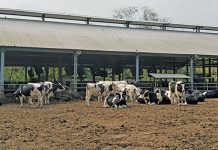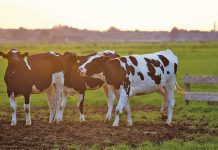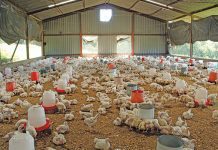
Over the past 100 years, antibiotics have worked miracles and saved millions of lives. However, in recent years, antibiotics have become increasingly ineffective as micro-organisms have evolved to resist them. This is known as antibiotic or antimicrobial resistance.
For decades, antibiotics were used in livestock production, the reasons being twofold: to treat and prevent health problems such as respiratory diseases and other bacterial infections, as well as to promote faster growth.
This overuse and misuse of antibiotics has resulted in further accelerating the resistance to antibiotics. The acceleration of resistance means that the same infections that were previously treated with antibiotics, no longer respond to antibiotic treatment.
Thus, these infections are more persistent and even life-threatening today. Antibiotic resistance has the potential to become the greatest problem in the livestock production sector if no new antibiotics are developed or if no other solutions are found.
When the global livestock industry first became aware of antibiotic resistance and the severity of this issue, the consensus was to reduce or eliminate the use of antibiotics. Misuse or overuse aside, antibiotics have become a major and critical broad-spectrum solution in industry.
However, according to research done by Dr Richard Murphy from Alltech, reducing or eliminating antibiotics does not reduce antibiotic resistance in microbes that are a concern for human health, such as E. coli, Salmonella and Campylobacter.
To test whether antibiotic resistant microbes could lose this resistance, Murphy performed several experiments at Alltech’s European Bioscience Centre. His tests concluded that once microbes have become resistant to antibiotics, they remain antibiotic resistant.
In other words, resistant microbes cannot be sensitised to antibiotics again when antibiotic use is reduced or eliminated and later reintroduced.
These tests suggest that once antibiotic resistance has already been established, reducing or eliminating the use of antibiotics will not impact antibiotic resistant microbes. The damage has already been done, so to speak.
This is a large animal health concern for our whole livestock industry. We therefore all need to play our part in finding new strategies and employing innovative solutions for antibiotic resistance.
How can we support livestock health without antibiotics?
A well-supported strategy is to focus on enhancing the gut health of animals by increasing the microbial diversity of their gut. Diversity within the gut microbiome plays a critical role in gut health, with beneficial microbes forming a protective barrier. This barrier prevents the growth of pathogenic bacteria such as Salmonella, Campylobacter and E. coli, amongst others.
Research outlines that an increase in microbial diversity is directly linked with an increased resistance to pathogen colonisation. This means that the more kinds of beneficial microbes are present in the gut, the greater the chance to keep the harmful microbes at bay. This strategy enables the gut to ‘self-police’ itself, thereby bringing about a reduction in the pathogen load and normalising gut function.
This gut health strategy can be demonstrated with the use of mannan-rich fractions (MRFs), which are isolated from the cell walls of Saccharomyces yeast and are known for their gut health supporting properties.
Commercial studies using MRFs in animal diets have allowed us to identify changes in gut microbes. These changes have been shown to be consistent as well as reproducible.
Limiting the colonisation of gut pathogens
The reason MRFs are successful in microbial control is due to their ability to bind to gut pathogens. This binding limits the colonisation of gut pathogens. You could think of binding pathogens almost like handcuffing a criminal; they cannot commit crime if their hands are tied.
In a similar way, bound pathogens cannot cause harm. In more technical terms, the use of MRFs enables a reduction in the spread of pathogens through direct control mechanisms based on clumping of gram-negative bacteria such as Salmonella and E. coli.
Additionally, MRFs rebalance the gut microbiome by encouraging the growth of beneficial microbes. This results in an enhanced high-level diversity of the gut microbiome, which is key to the success of MRFs in influencing gut health.
More recent work has demonstrated that enhancing microbial diversity increases indirect pathogen control mechanisms. A study has shown the potential to reduce pathogen load in the gut.
When MRFs were added to the diet, the resulting enhancement of the gut microbial diversity decreased pathogen colonisation, and a notable increase in beneficial gut butyrate levels (an indirect pathogen control mechanism) was associated with this too.
Adjusting the gut microbes can have a wide range of benefits along with impacts at microbial level. Recent studies have also demonstrated links between gut microbes and the prevalence of antibiotic resistance gene markers (microbial genes that enable antibiotic resistance).
The supplementation of MRFs in the diets of broilers has been associated with a decrease in selected antibiotic resistance gene markers. This means that broilers that consumed diets enriched with MRFs, have been associated with a decrease in antibiotic resistant microbes.
This is potentially linked to the ability of MRFs to reduce plasmid transfer (exchanging genetic information) between microbes, and in doing so, prevent the spread of antimicrobial resistance. Research has shown that MRFs can influence microbial metabolism, and through this, influence the sensitivity of resistant microbes to antibiotics.
When E. coli was grown in the presence of MRFs, its growth and metabolism were altered. This resulted in antibiotic-resistant strains becoming increasingly sensitive to antibiotic treatment.
Therefore, by making changes in the overall microbial diversity within the gut, the gut microbes can be repaired and rehabilitated. This leads to reductions in pathogen load, enhances the gut’s resistance to pathogen colonisation, and reduces the need for antibiotics.
Is the solution then to make therapeutics more effective rather than to reduce or limit the use of antibiotics?
Email Alretha Naudé at [email protected].













